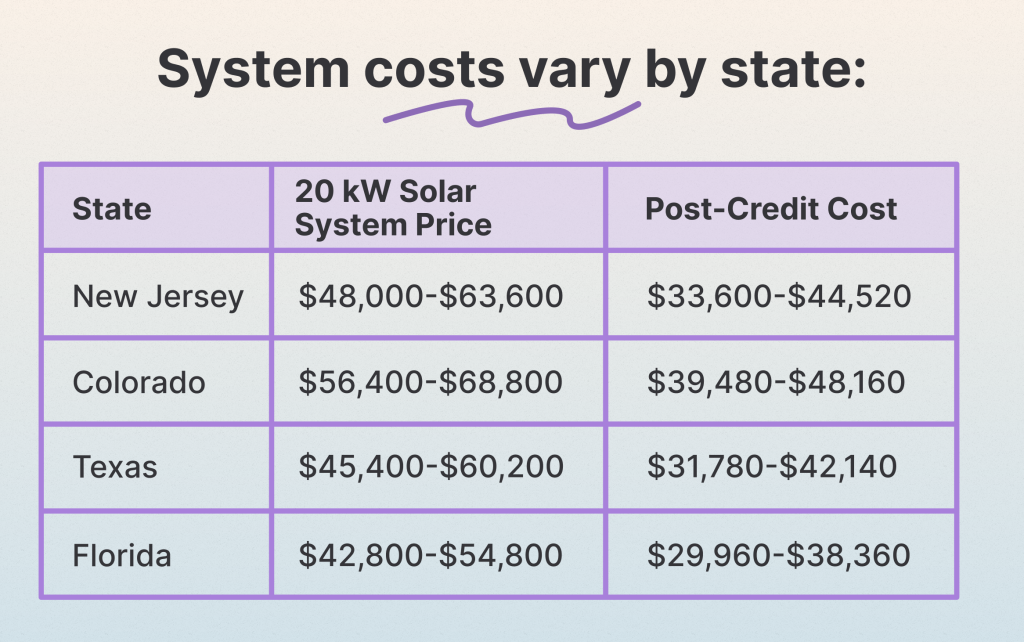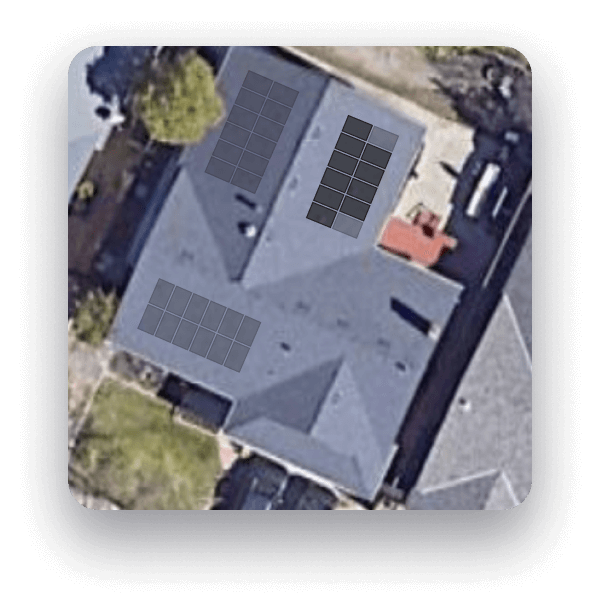Here's an overview of what this solar system size might cost for your home.
As solar energy continues to grow in popularity, many homeowners are considering making the switch. One common question is, “How much does a 20 kW solar system cost?”
Whether you’re completely new to solar systems or trying to figure out which system is best for your home, we’ll break down what a kilowatt (kW) is, how much power a typical family needs, and the various factors influencing the cost of installing a 20 kW solar system.

Understanding Kilowatts and Energy Needs
A kilowatt (kW) is a unit of power equal to 1,000 watts. It measures the rate at which energy is used or produced. For context, a single kW can power ten 100-watt light bulbs. When it comes to solar energy systems, kW is used to describe the system’s capacity to generate power.
Energy consumption in a household can vary widely depending on several factors, including the size of the home, the number of occupants, and the types of appliances used.
For example, a typical four-person family in a state like California might use about 900 to 1,000 kilowatt-hours (kWh) of electricity per month, translating to a daily usage of around 30 to 33 kWh.
To understand how much power a 20 kW solar system can produce, it’s helpful to know that, on average, 1 kW of solar panels can generate about 4 to 5 kWh of electricity per day. With that in mind, a 20 kW system can produce approximately 75 kWh daily on average, depending on location, weather, and panel efficiency.

What is Offset?
Offset refers to the percentage of a household’s energy consumption that is covered by the solar system’s output. If a solar system produces as much electricity as a household uses, the offset is 100%. However, achieving full offset depends on various factors, including the size of the solar system, energy consumption patterns, and local climate conditions.
For instance, a 20 kW system for a family that consumes 30 kWh daily could potentially offset their electricity usage, assuming optimal conditions. However, it’s important to consider factors like seasonal weather changes, roof structure and pitch, shading, and potential increases in energy consumption over time.

Cost of a 20 kW Solar System
The cost of a 20 kW solar system can vary widely based on several factors:
- Location: Solar panel prices and installation costs can differ by region due to variations in labor costs, permitting fees, and local incentives.
- Type of Panels: Higher efficiency panels generally cost more but can generate more electricity in a smaller space.
- Installation Complexity: Roof type, angle, and the presence of obstructions (buildings or trees, for example) can affect installation costs.
- Incentives and Rebates: Federal, state, and local incentives can significantly reduce the overall cost of a solar system.
On average, as of 2024, the cost of installing a 20 kW solar system in the United States can range from $40,000 to $60,000 before incentives. This translates to approximately $2 to $3 per watt.
After applying the Federal Investment Tax Credit (ITC), which currently allows homeowners to deduct 30% of the installation cost from their federal taxes, the net cost could drop to between $28,000 and $42,000.
State-by-state Cost Breakdown

Long-Term Savings and Benefits of a 20kW Solar System
While the initial investment in a 20 kW solar system might look substantial, the long-term savings can be significant.
Homeowners can drastically reduce or even eliminate monthly electricity bills by generating their own electricity. Additionally, solar energy systems typically have a lifespan of 25 to 30 years, providing decades of clean, renewable energy.
Plus, homes equipped with solar panels often see an increase in property value. Buyers are increasingly aware of the benefits of solar energy, including lower energy bills and reduced environmental impact. This added value can make the initial investment in solar more attractive.
A 20 kW solar system can be a worthwhile investment for households with higher energy needs, offering substantial long-term savings and environmental benefits.


























